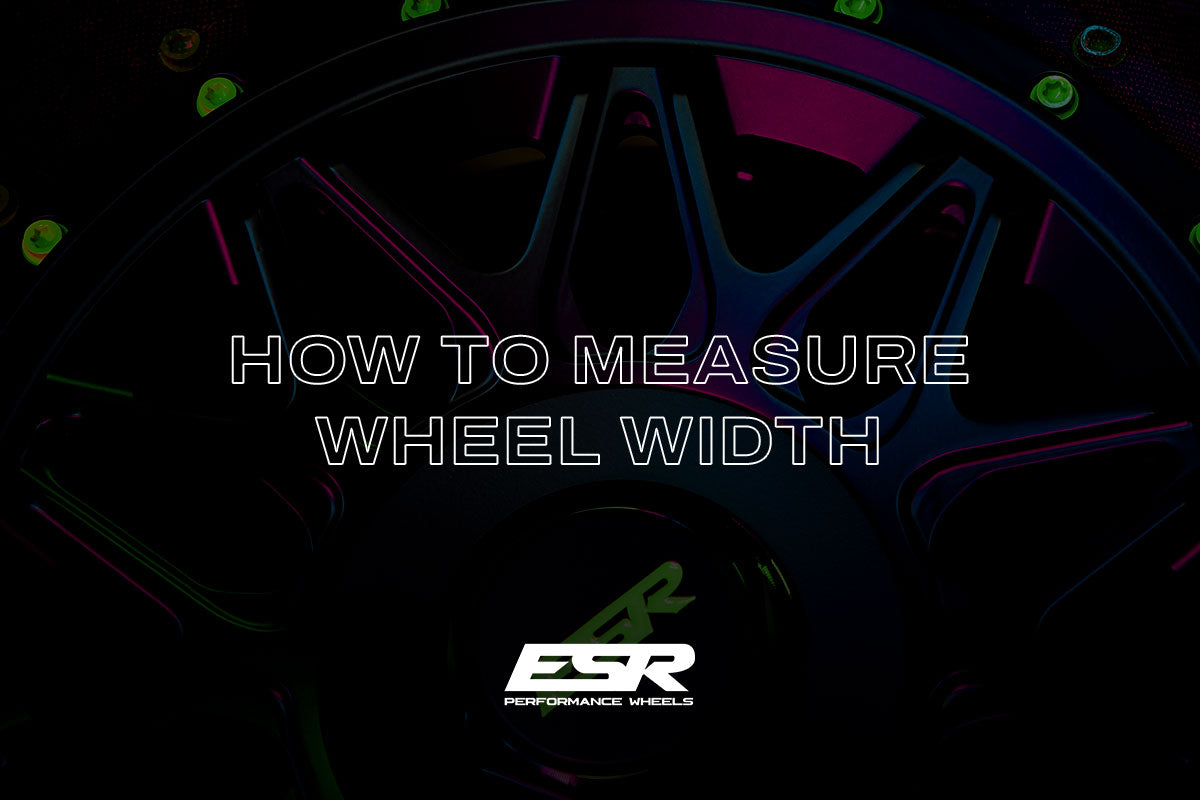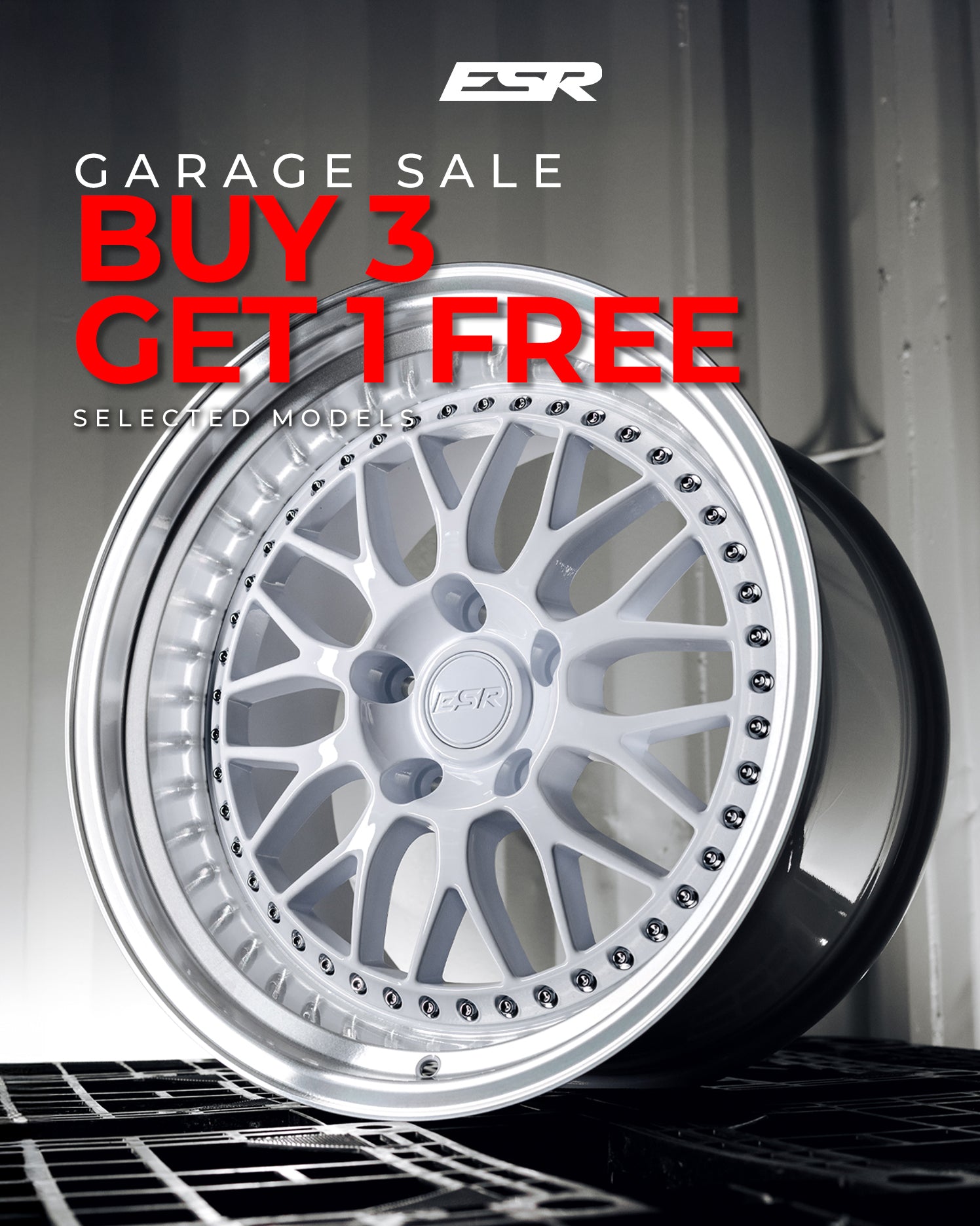
How To Measure Wheel Width
Welcome to ESR Wheels, where we're all about high-quality wheels that look good and perform even better. As leaders in aftermarket wheels, we're known for our top-notch products that take your ride to the next level. Let’s take a look at how to measure wheel width to help you find the perfect wheels for your vehicle.
Understanding the Importance of Wheel Width Measurement
Accurate wheel width measurement is essential for ensuring proper fitment of aftermarket wheels and tires, as well as optimizing the performance and aesthetics of your vehicle. Whether you're upgrading to wider wheels for a more aggressive stance or selecting the perfect tire size for improved handling, precise measurements are crucial for achieving the desired look and functionality. In this guide, we'll explore the step-by-step process of measuring wheel width accurately, providing you with the knowledge and tools necessary to make informed decisions for customizing your vehicle.
Why Measure Wheel Width: Impact on Vehicle Performance and Aesthetics
Measuring wheel width is paramount for both vehicle performance and aesthetics. The width of the wheel plays a significant role in determining the tire size that can be mounted, which directly affects the vehicle's handling characteristics and traction. Wider wheels allow for the installation of wider tires, providing enhanced grip and stability, especially during high-speed cornering and acceleration.
Also, the proper alignment of wheel width with tire size ensures optimal weight distribution and load-bearing capacity, contributing to overall driving dynamics and safety. Aesthetically, the wheel width influences the stance and visual appeal of the vehicle. Wider wheels can give a more aggressive and muscular look, enhancing the vehicle's presence on the road and reflecting the owner's personal style preferences. Measuring wheel width accurately is essential for achieving the perfect balance between performance and aesthetics, resulting in a the perfect fitment for your car.
Tools Needed for Wheel Width Measurement
Before you begin measuring wheel width, it's essential to gather the necessary tools to ensure accuracy and precision. Common tools for wheel width measurement include a tape measure or ruler, a digital caliper for more precise measurements, and a straight edge or carpenter's square for verifying wheel diameter and width. Additionally, a wheel bolt pattern gauge can help determine the correct bolt pattern, ensuring compatibility with your vehicle's hub. By having the right tools on hand, you can confidently measure wheel width and select the perfect aftermarket wheels and tires for your vehicle.
Step-by-Step Guide: How to Measure Wheel Width Properly
Measuring wheel width accurately requires attention to detail and proper technique. Start by positioning the wheel on a flat surface with the backside facing up. Then, using a tape measure or ruler, measure the distance between the inner edges of the wheel's rim. This measurement represents the wheel width and is typically expressed in inches or millimeters. Be sure to measure accurately, accounting for any protrusions or lips on the wheel's rim, to ensure compatibility with your vehicle's suspension and brake components. With precision and care, you can confidently measure wheel width and select the perfect aftermarket wheels for your vehicle.
Factors to Consider: Understanding Offset and Backspacing
Offset and backspacing are critical factors to consider when selecting aftermarket wheels for your vehicle. Offset refers to the distance between the centerline of the wheel and the mounting surface, determining how far the wheel will sit inwards or outwards from the vehicle's hub. Positive offset values indicate that the mounting surface is towards the front face of the wheel, while negative values indicate that it's towards the back face. Backspacing, on the other hand, measures the distance from the mounting surface to the inner edge of the wheel, influencing clearance with suspension and brake components. Understanding offset and backspacing ensures proper fitment and prevents issues like rubbing or interference, ultimately optimizing the performance and aesthetics of your vehicle.
Ensuring Proper Fitment: Matching Wheel Width to Tire Size
Matching wheel width to tire size is essential for achieving proper fitment and optimizing the performance and aesthetics of your vehicle. The width of the wheel dictates the range of tire sizes that can be mounted effectively, ensuring compatibility with the vehicle's suspension and brake components. A wider wheel allows for the installation of wider tires, which not only enhances grip and stability but also improves handling characteristics, especially during aggressive driving maneuvers. Additionally, matching wheel width to tire size ensures uniformity in appearance and prevents issues like bulging or stretching of the tire sidewall. By carefully selecting the appropriate tire size to match the wheel width, you can achieve the perfect fitment and elevate the overall look and performance of your vehicle.
Common Mistakes to Avoid When Measuring Wheel Width
While measuring wheel width may seem straightforward, there are several common mistakes to avoid to ensure accuracy and reliability. One common mistake is failing to measure from the inner edges of the wheel's rim, resulting in incorrect measurements and compatibility issues with aftermarket wheels and tires. Additionally, not accounting for factors like wheel offset and backspacing can lead to improper fitment and potential safety hazards. It's also essential to use the correct units of measurement and tools when measuring wheel width to ensure consistency and precision. By avoiding these common mistakes, you can confidently measure wheel width and select the perfect aftermarket wheels and tires for your vehicle.
Mastering Wheel Width Measurement for Optimal Vehicle Customization
Mastering wheel width measurement is essential for achieving optimal vehicle customization and ensuring the perfect fitment of aftermarket wheels. Accurate measurements allow you to select wheels that complement your vehicle's design and performance requirements, enhancing both aesthetics and functionality. By understanding the intricacies of wheel width measurement and considering factors like offset and backspacing, you can prevent issues such as rubbing or interference with suspension components. Additionally, matching wheel width to tire size ensures uniformity in appearance and maximizes traction and handling characteristics. With precision and attention to detail in wheel width measurement, you can confidently embark on your vehicle customization journey and create a truly personalized driving experience.
High-Quality Wheels From ESR Wheels
With ESR Wheels, you're not just investing in wheels; you're investing in unparalleled craftsmanship, performance, and style. Our commitment to excellence ensures that every wheel we produce meets the highest standards of quality and durability, providing you with a driving experience that exceeds expectations. Shop our selection of aftermarket wheels to get your vehicle looking better than ever!

